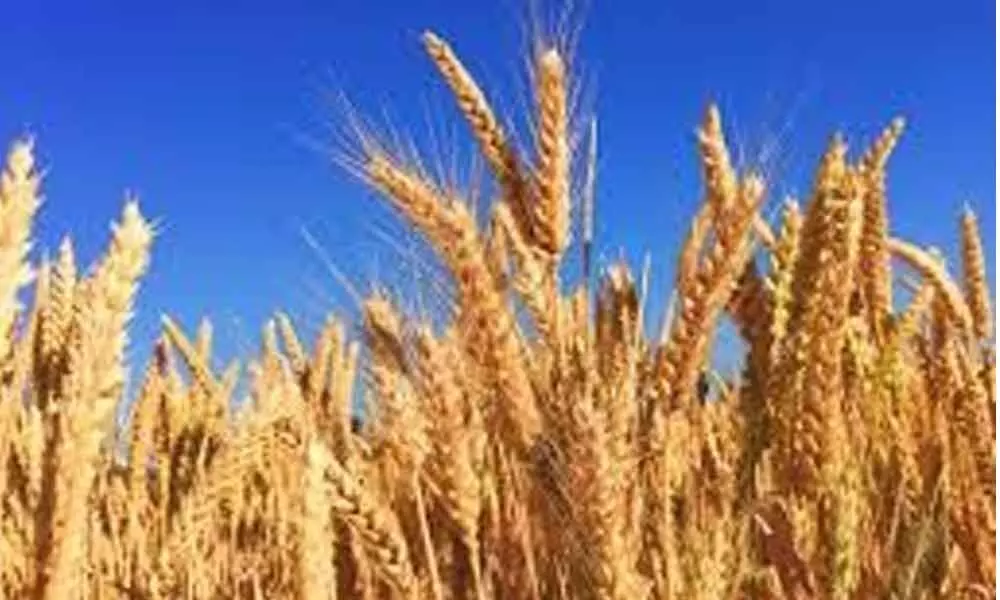Giving A Gift That Keeps Giving

Representational Image
Here is how India can bend the arc of hunger, optopolitics in Afghanistan
The children and people of Afghanistan are in midst of harshest conditions of hunger. According to reports, 95 per cent of the people in Afghanistan do not have enough food, and more than half of Afghanistan's 39 million people are "marching to starvation." With winter approaching, this onslaught will exact a cruel toll of human life in Afghanistan.
It is laudable that the Indian government, recognising the gravity of the humanitarian crisis, and in empathy and sympathy with the children and people of a proud and war-torn nation, has offered to immediately donate 50,000 tonnes of wheat to Afghanistan.
Against this backdrop, the think-tank Imagindia Institute, and the Lemonade Party, a global motivational movement with a motto to make lemonade when life gives you lemons, are urging that India could execute a masterstroke of innovation in food security for Afghanistan – by doing just a tad little more than what it is already planning.
The suggestion is, India must add a block of 1,000 tonnes of "Seeds of Hope and Trust," in addition to the 50,000 tonnes of wheat-grains that will be sent to Afghanistan. This extra 1,000 tonnes would be wheat-seeds that our Afghan brothers and sisters can sow and keep reaping the benefits for several years. Let us unpack the nuances and value of such a gift, below. A gift that keeps giving – seeds of hope and trust. While the 50,000 tonnes of wheat-grains from India that reach Afghanistan will be consumed within weeks or months, the additional 1,000 tonnes of the seeds of hope and trust will be a gift to the Afghan people that will keep producing about 30,000 tonnes of wheat-grains, year on year. Within 9 months of sowing, under Afghan conditions, the 1,000 tonnes of the wheat seeds will produce a first crop of about 30,000 tonnes of wheat-grains. Out of these 30,000 tonnes, 1,000 tonnes would be kept aside as wheat-seeds to sow the next crop, and the balance 29,000 tonnes can be consumed.
This cycle can be repeated every year and will provide 29,000 tonnes of wheat-grains per year, for the next 4 years at least. The returns will be manifold for both Afghanistan and India. It will add to the food security of Afghanistan, on a year-on-year sustainable basis, and India will earn ongoing goodwill of Afghan people, every year, at harvest time.
The Lemonade Party has done research to evaluate the technical pragmatism of our call to send seeds of hope and trust to Afghanistan, as a piggy-back to the donation of wheat-grains.
As compared to India, where one crop of wheat is harvested in about 6 months (and in balance 6 months of the year, 2-3 other crops are harvested from the same farmland), in Afghanistan the wheat crop cycle takes about 9 months (and in balance 3 months of the year farmers may, or may not, grow some local, seasonal produce). In highland cold regions of Afghanistan, wheat is sown in the months of October-November, and it remains under snow till February. The buried seedlings start growing once the snow melts, and the crop is harvested in April to June.
A reason for low productivity in Afghanistan, other than soil conditions, is that they use very little fertilizers in farming on account of non-availability, and many fertilizer chemicals are banned there. Fertilizer chemicals are banned because these can be used to make explosives, IEDs, and such. In absence of fertilizers, crops in Afghanistan yield a low productivity.
India has donated wheat-grains to Afghanistan in past years also -- but that was via the cumbersome sea-route. Last year, India donated 75,000 tonnes of wheat-grains which were sent via the sea route from Kandla port in India to the Chabahar port in Iran, and then trucking from Chabahar to the Iran-Afghanistan border in the remote south-east province of Nimroz in Afghanistan.
However, this time round, India is proposing to instead deliver the shipment of 50,000 tonnes of wheat-grains via the shorter land route, a mere 650 km to Afghanistan border from the Attari-Wagah border, via Pakistan. Given the state of India-Pakistan relations, Pakistan has been trying to ignore, stone-wall this delivery. However, a range of diplomatic and geopolitical efforts are at play, and given the humanitarian urgency there is a decent chance that Pakistan will acquiesce – with some usual conditions of international customs, and cross-border travel.
Now, to carry these 50,000 tonnes, it would need about 5,000 trucks (say, more or less) to start rolling their wheels from Attari-Wagah, travel across Pakistan, and reach Afghanistan.
An extra 1,000 tonnes of seeds of hope and trust will mean only an additional 100 trucks, that could easily be part of this caravan. Thus, instead of 5,000 trucks, it shall be 5,100 trucks. With a massive exercise planned out with 5,000 trucks -- what is an additional 100 trucks? It is time for India to send seeds of hope and trust to Afghanistan.
(Robinder Nath Sachdev is president of Imagindia Institute, and founder of the global Lemonade Party; Dr. Anand Kumar Agnihotri is an agriculture expert)
















